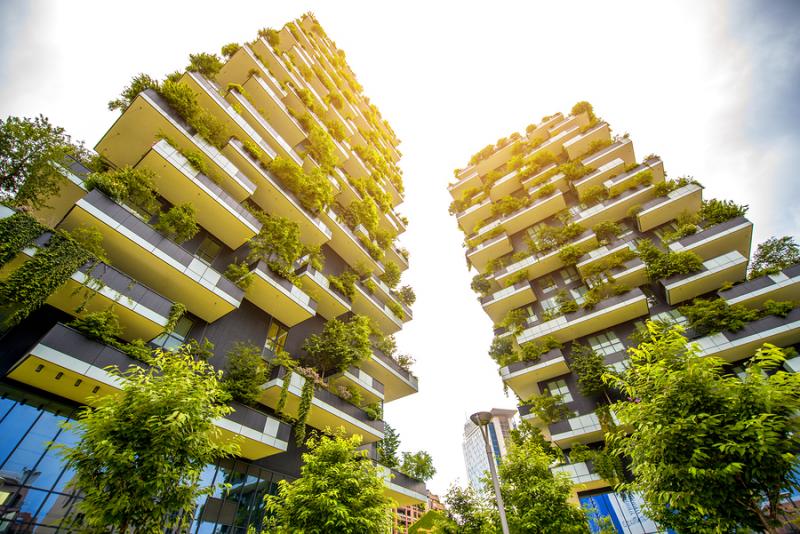By: Margherita Ragg
Visiting the sprawling city that Milan is today, it seems impossible to believe that it grew from a fortified city ringed with walls. The main sights of the city center are contained within the cerchia dei navigli, a ring of canals that were once the moat surrounding the medieval walls, navigable until they were covered in 1929. That's where you'll find the Duomo, Galleria Vittorio Emanuele and the boutiques of Via Montenapoleone.
Most first-time visitors to Milan don't leave the city center, but what about the rest of the city? It's easy to dismiss Milan's periferia as a drab expanse of concrete and traffic. The truth is, outside the city center you'll find street art, multicultural neighborhoods, urban nature, and much of that contemporary culture that makes Milan what it is today.
Here are a selection of what's to see away from Milan's city center - just to show that the city has a lot more to offer than just fashion and luxury!
1. Lambrate
This district was one a separate village, and then became on of the industrial hotspots of the city, until most factories shut their doors in the 1980s. It stood empty until a few years ago, when the whole area around Via Ventura was renovated and warehouses became lofts, coworking spaces and designer studios, while retaining their former industrial look.

The area comes to life during in April, when it becomes one of the best places to enjoy Design Week events. Lambrate is also home to Milan's best brewery, award-winning Birrificio Lambrate, serving a selection of tasty beers in two popular bars.
2. Isola
Isola means island in Italian - and this neighborhood near Garibaldi station is exactly that, an urban island separated from the rest of the city by the station and railway tracks. It was once a working class district, and it is still possible to spot some case di ringhiera, Milan's traditional apartment buildings from the early 20th century.
Nowadays, Isola is one of the places in Milan where everybody wants to live, because of its location and wonderful mix of old Milanese tradition and modernity. It's a pleasant place for a wander - independent designer shops share the streets with family-run botteghe, ramen restaurants and traditional trattorie are just as popular with locals. To make things even better, it's one of the best places for street art in the city and there's an excellent street market on Tuesdays and Saturdays in Via Garigliano.
 A close-up of Bosco Verticale, Photo Credit: Nick Burns of The Crowded Planet
A close-up of Bosco Verticale, Photo Credit: Nick Burns of The Crowded Planet
3. Navigli
The Navigli are all that's left of Milan's once extensive network of canals. Three canals survive in the city - the two best known are Naviglio Grande and Naviglio Pavese, heading out of the city from the Darsena, a man-made lake that was once Milan's harbor. The area around Darsena and the two Navigli is a popular nightlife destination, and one of the best places for street food in town.
The Navigli are also a wonderful place for a Sunday bike ride. Both have bike lanes - the one running along the Naviglio Grande goes to Abbiategrasso and the abbey of Morimondo, while the Naviglio Pavese path can be followed until Pavia and its Certosa, one of the best examples of Renaissance architecture in the region.
 Il Naviglio Grande a Gaggiano, Photo credit: Wikipedia Commons
Il Naviglio Grande a Gaggiano, Photo credit: Wikipedia Commons
The Navigli bike paths are very popular, and you may come across some crowds on sunny days. An alternative would be following Naviglio Martesana, the third surviving canal, heading from Via Melchiorre Gioia to the Adda River, more than 40 km to the east. The canal travels across Milan's outskirts and suburbs - its lock system was planned by none other than the great Leonardo Da Vinci, during his Milanese sojourn. If you see large rodents swimming, don't fret - they're not giant rats but coypu, the heirs of a colony that escaped after a fur factory in the area was shut in the 1960s.
4. Bicocca
Bicocca is another former industrial neighborhood in the northern part of the city, now housing one of Milan's universities. It's worth a visit for two main reasons - one is the Arcimboldi theatre, built in a converted tire factory in 2000 to house the Scala opera season during its three-year renovation. It's a great option for a ballet or a classical music concert, especially if you can’t afford the expensive Scala tickets. Another reason to head to this part of the city is HangarBicocca, another former factory turned into a contemporary art gallery organizing exhibitions with large-scale installations.
 Fausto Melotti "La Sequenza" permanent exhibition in the HangarBicocca
Fausto Melotti "La Sequenza" permanent exhibition in the HangarBicocca
5. Chiaravalle
The southern edges of Milan contain the Parco Agricolo Sud Milano, a large area of park and agricultural land extending all the way to the south of the province, encompassing 61 municipalities.
The Parco Agricolo area includes castles, villas, farmhouses and abbeys. Chiaravalle Abbey is especially worth a visit - it's set in a secluded corner of the city, immersed in nature. The Cistercian abbey was founded in the 12th century and it is one of the first examples of Gothic architecture in Italy - its distinctive tower, known locally as ciribiriciaccola, reaches the height of 56 meters.
 Abbazia di Chiaravalle, Photo credit: Flickr (Milena & Carlo)
Abbazia di Chiaravalle, Photo credit: Flickr (Milena & Carlo)
Foodies should definitely pay a visit to the abbey - the monks of Chiaravalle produced a kind of hard, granular cheese, believed to be one the first versions of Parmesan.








